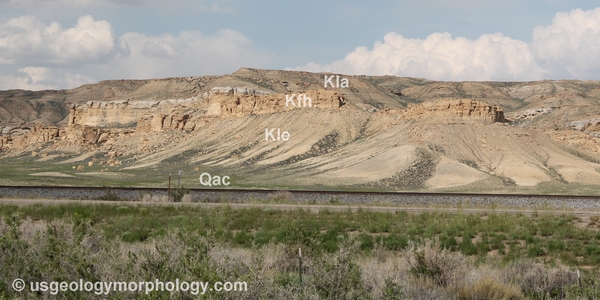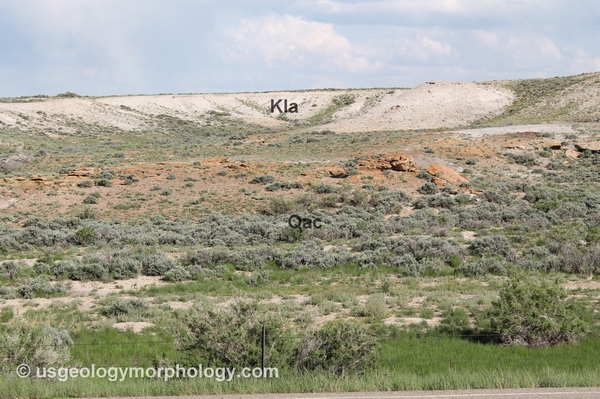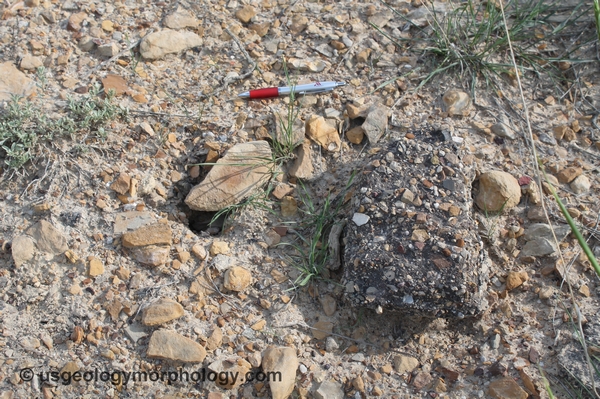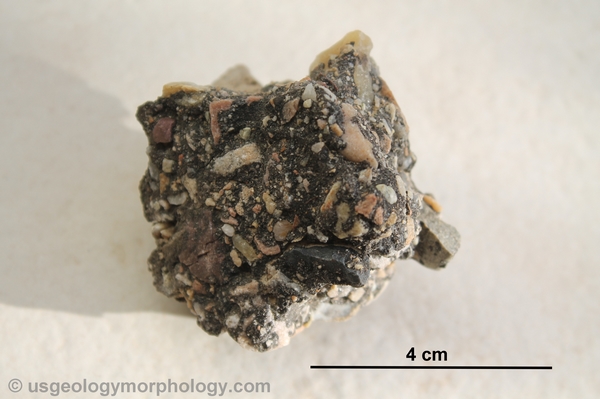Rock Springs Uplift and Adjacent Areas (cont.)
4 Rock Springs Uplift (cont.)
4.4 Rock Springs Uplift Upper Units

Figure 4-23. Lewis shale, Fox Hills sandstone and Lance formation.
View to the east across Deadman Wash, eastern half of Rock Springs uplift. Note the differences of hardness between Lewis shale (Kle), Fox Hills sandstone (Klh) and Lance formation (Kla, interbedded sandstone, siltstone and shale).

Figure 4-24. Lance formation.
Lance formation (Kla) is exposed on the edge of a small shallow depression, eroded by runoff and filled with Quaternary alluvium and colluvium (Qac).

Figure 4-25. Fort Union formation in the eastern half of Rock Springs uplift.
Fort Union formation consists of sandstone (top of the photo), often poorly consolidated, interbedded with shale, siltstone, mudstone and coal. A coal mine is active near the photo site.

Figure 4-26. Clinker in Fort Union formation, Wyoming.
Clinker is baked and fused rock from the natural burning of coal.

Figure 4-27. Clinker close-up.
Vegetation fires, e.g. caused by lightning, burn the coal seams close to the surface. Sandstone turns into pink brick and shales into white porcellanite. When heat is sufficient to melt rocks, it produces black paralava.
